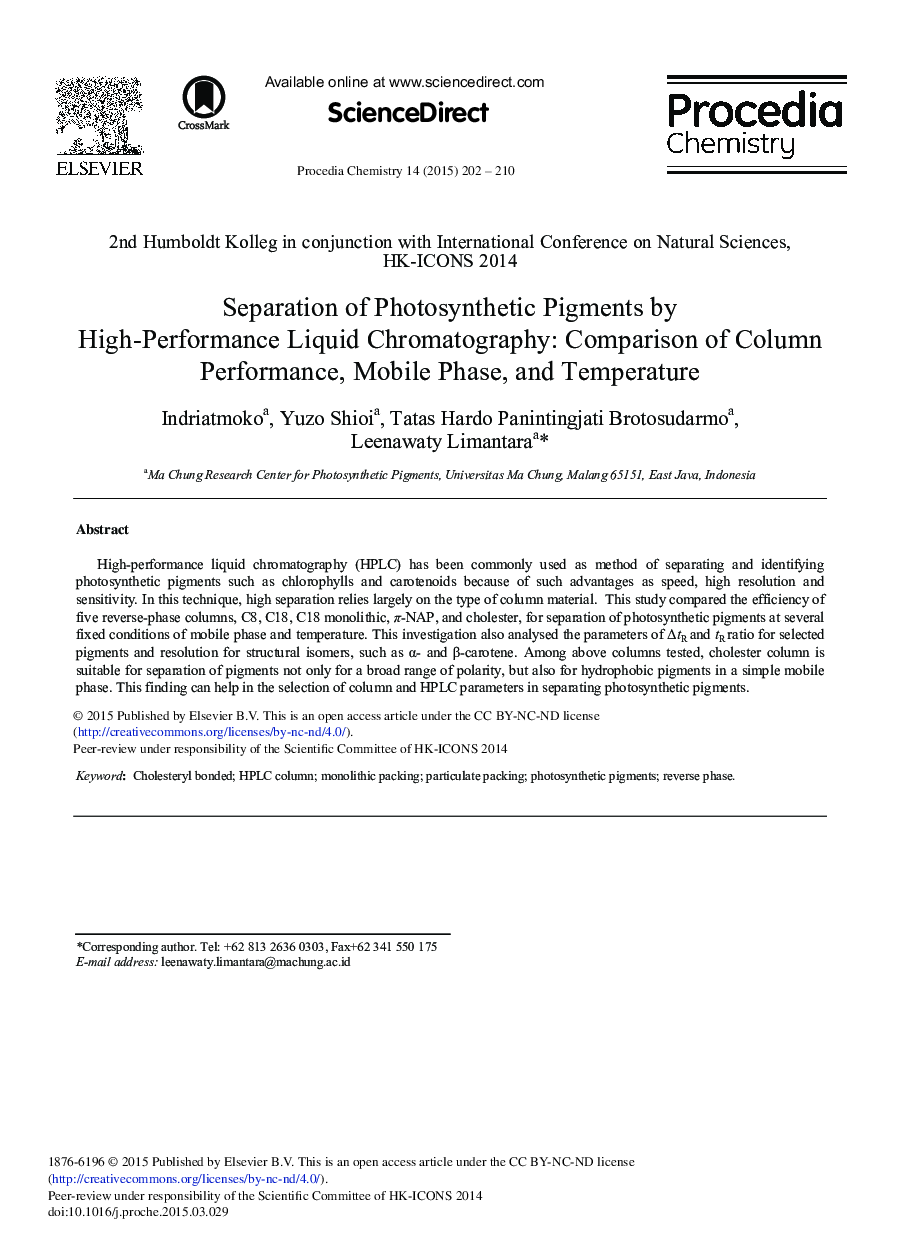| Article ID | Journal | Published Year | Pages | File Type |
|---|---|---|---|---|
| 240372 | Procedia Chemistry | 2015 | 9 Pages |
High-performance liquid chromatography (HPLC) has been commonly used as method of separating and identifying photosynthetic pigments such as chlorophylls and carotenoids because of such advantages as speed, high resolution and sensitivity. In this technique, high separation relies largely on the type of column material. This study compared the efficiency of five reverse-phase columns, C8, C18, C18 monolithic, π-NAP, and cholester, for separation of photosynthetic pigments at several fixed conditions of mobile phase and temperature. This investigation also analysed the parameters of ΔtR and tR ratio for selected pigments and resolution for structural isomers, such as α- and β-carotene. Among above columns tested, cholester column is suitable for separation of pigments not only for a broad range of polarity, but also for hydrophobic pigments in a simple mobile phase. This finding can help in the selection of column and HPLC parameters in separating photosynthetic pigments.
